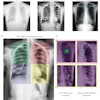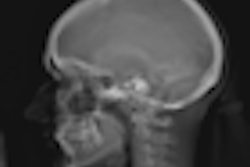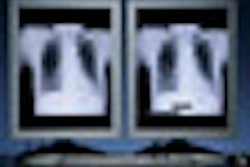CHICAGO - Radiologists are in a unique position to diagnose and treat a newly identified psychiatric disorder in which patients jam paper clips, staples, pencil lead, and other foreign objects into their bodies, researchers said at the RSNA 2008 meeting.
The first report on the so-called self-embedding disorder "shows it is clearly worse than self-cutting: 90% [of victims] have suicidal ideations," said Dr. William Shiels, chief of radiology at Nationwide Children's Hospital in Columbus, OH.
"The radiologist is in a critical position to make the first diagnosis, remove the objects, and mobilize a multidisciplinary team to interrupt the cycle," he said. "Often, the parents don't know what is going on, the patient's physician doesn't know what's going on, but the radiologist can take one look at the x-ray and see the self-embedded object."
The new findings grew out of an ongoing longitudinal study in which 505 patients to date have undergone image-guided foreign body removal with sonography and/or fluoroscopy.
Of the 505 patients, the researchers identified 10 patients with a unique and consistent profile. First, they had inflicted the injury on themselves, embedding objects into their bodies with the intention of harming themselves, Shiels said.
In addition, all suffered from other psychological disorders, he said. Among their diagnoses were depression, bipolar disorder, obsessive-compulsive disorder, attention deficit hyperactivity disorder, and post-traumatic stress disorder.
At the meeting, the researchers reported on 19 episodes of self-embedding injury in nine adolescent girls, ages 15 to 18 years.
Together, they had jammed a total of 50 objects into their arms, two into their ankles and feet, and one into their hands. The embedded objects included metal needles, metal staples, metal paper clips, glass, wood, plastic, graphite (pencil lead), crayon, and stone.
Seventy percent suffered repeat episodes, with 71% of repeat episodes increasing in intensity. One teen put seven different items into her arm at one time, including an unfolded metal paper clip more than six inches in length.
Percutaneous radiological treatment proved safe, precise, and effective for removing the self-inflicted radiopaque and nonradiopaque foreign bodies, including those at risk for fragmentation during traditional operative removal techniques, Shiels said.
The mean incision size was 2 mm to 8 mm, with a mean of 4.9 mm. Twenty-eight objects were removed using ultrasound guidance, 13 using fluoroscopic guidance, and 12 using both ultrasound and fluoroscopic guidance.
"There was 100% successful removal," Shiels reported, with minimal or no scarring and no cases of infection or nerve, tendon, or vascular injury. There was one case of fragmentation, involving removal of a staple.
Critical techniques being taught to other physicians for removal of self-embedded foreign objects include hydrodissection using lidocaine and a 23-gauge needle, tactile dissection using forceps and a 23-gauge needle, blunt dissection using forceps, and sharp dissection using a #11 scalpel.
Since the disorder was identified two months ago, at least six other hospitals have reported cases, Shiels said, and his team is setting up a national registry to monitor the cases.
"It will be a Web-based method where radiologists and other physicians who want to be part of a long-term study can add data and photos," he said.
By Charlene Laino
AuntMinnie.com contributing writer
December 3, 2008
Copyright © 2008 AuntMinnie.com



















